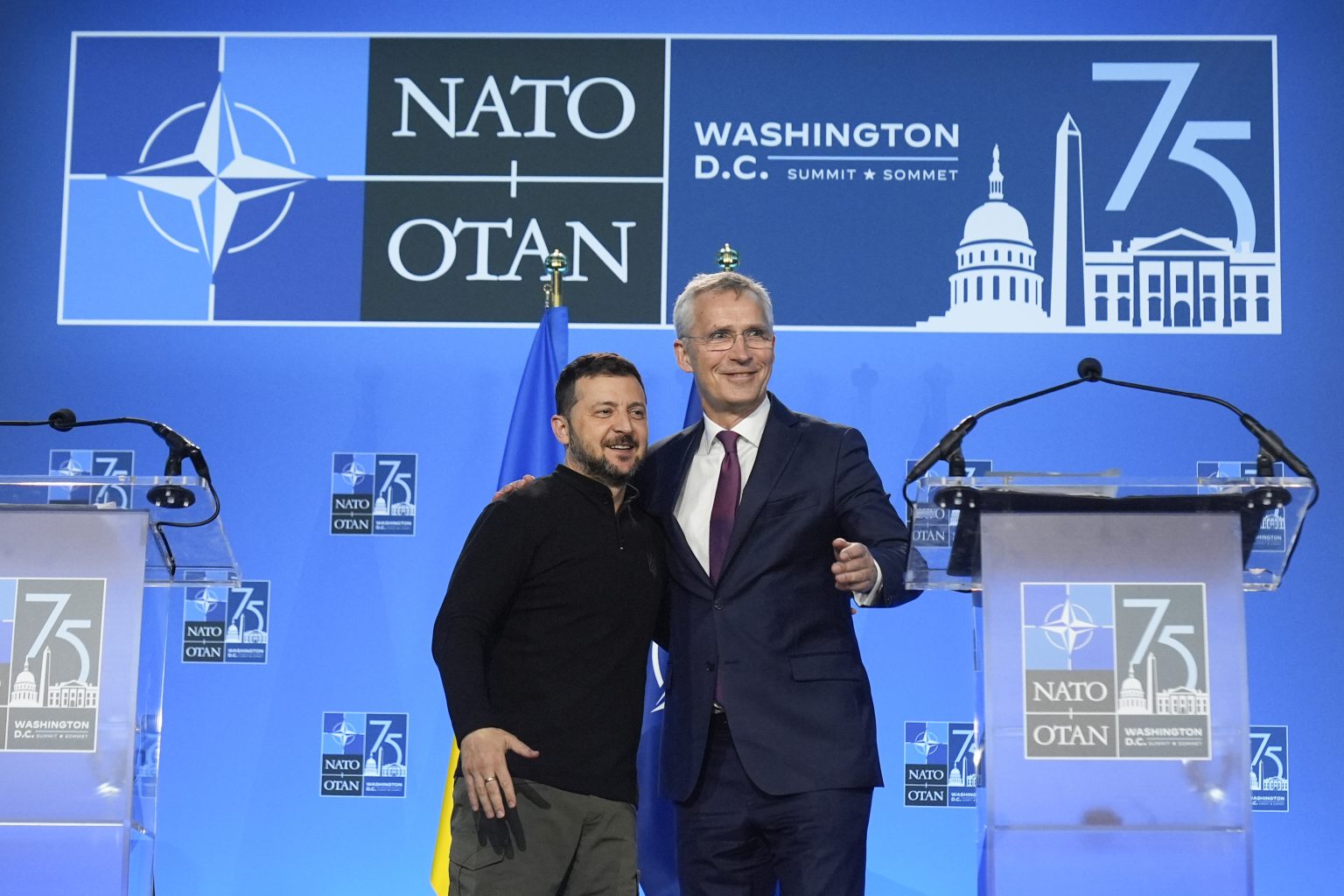NATO has not shown any indication of inviting Ukraine to join the alliance in the near future, as members seek further details from Ukrainian President Volodymyr Zelensky about his “victory plan” to end the war with Russia. The plan includes Ukraine’s request for NATO to advance its membership application, submitted two years ago after Russia’s invasion. However, as a partner, Ukraine does not currently qualify for NATO’s collective security guarantee under Article 5. NATO Secretary-General Mark Rutte did not endorse Zelensky’s plan but stated that Ukraine would eventually become a member.
Rutte emphasized the need to focus on helping Ukraine regain territory and strengthen its negotiating position. Zelensky is expected to present more details of his plan to EU leaders, most of whom are also NATO members. The urgency comes as Ukraine’s forces struggle against better-equipped Russian troops in the eastern Donetsk region, with Western aid arriving too slowly. Zelensky argued that an invitation to NATO would demonstrate the allies’ commitment, calling it a strong decision that requires determination.
Discussions surrounding Ukraine’s NATO membership have been ongoing for 16 years, with members declaring at a summit in July that Ukraine is on an “irreversible” path to joining. However, progress has been slow since NATO’s promise in 2008 that Ukraine, along with Georgia, would eventually become members. With the U.S. preparing for a presidential election and European allies anticipating little movement on Ukraine until a new president takes office, NATO remains in a holding pattern. Concerns about being dragged into a wider conflict with nuclear-armed Russia have led some to oppose Ukraine’s membership until the conflict ends.
NATO diplomats have also emphasized the need for Ukraine’s borders to be clearly defined before joining the alliance to prevent any ambiguity regarding the application of Article 5. Approximately 20% of Ukraine’s territory is currently under Russian control, further complicating the situation. While there has been some progress in discussions about Ukraine’s NATO membership, many details remain to be worked out with Ukrainian officials in order to understand the full scope of their “victory plan,” as well as what NATO can realistically offer in terms of support.
As the situation in Ukraine continues to evolve, NATO members are being cautious in their approach to Ukraine’s potential membership in the alliance. While there is a recognition of Ukraine’s desire for security guarantees from NATO, there are also concerns about the implications of inviting Ukraine to join, particularly in the midst of the ongoing conflict with Russia. Ultimately, the decision on Ukraine’s NATO membership will require further dialogue and negotiation between Ukraine and NATO members to determine the best path forward in ensuring security and stability in the region.
Overall, the path to Ukraine’s membership in NATO remains uncertain, with various challenges and considerations to address before any formal invitation can be extended. As discussions continue between Ukrainian officials and NATO members, the focus remains on finding a solution that will not only benefit Ukraine’s security but also maintain peace and stability in the region. The coming months will likely be crucial in determining the next steps in Ukraine’s potential membership in the alliance.








